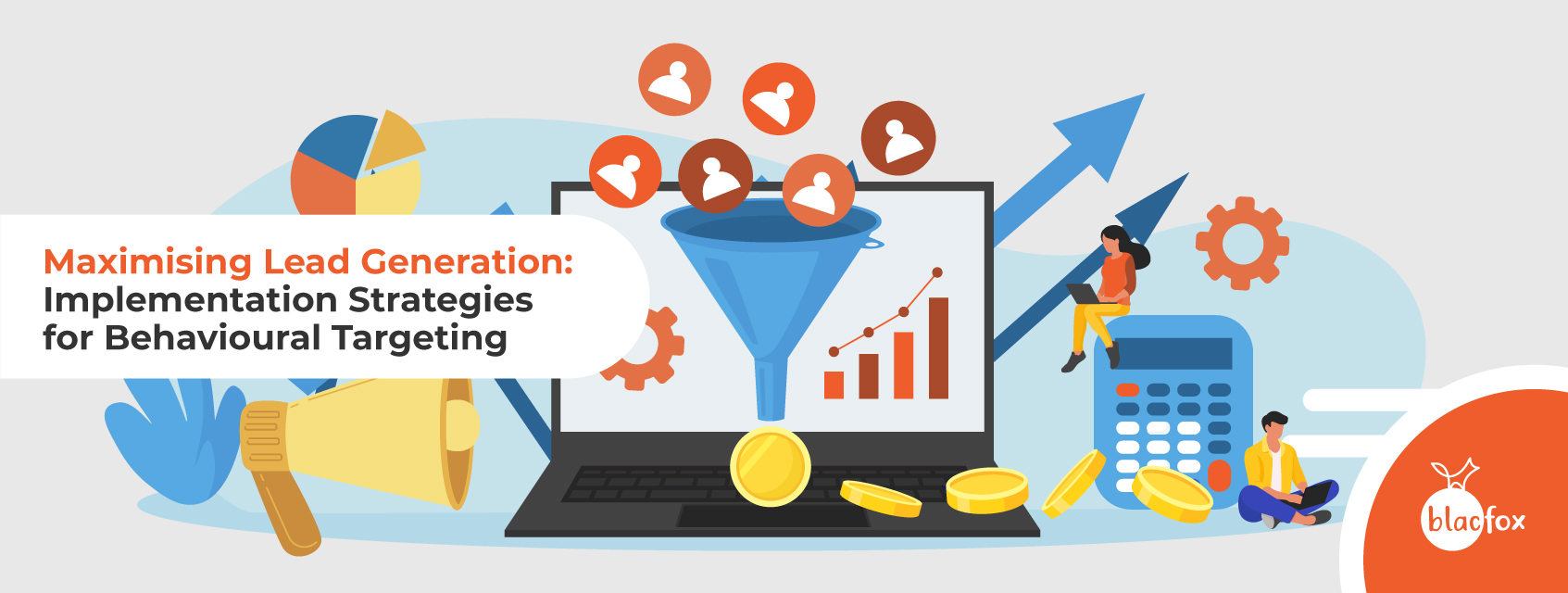
Introduction
Generating high-quality leads in the technology industry is a complex and often daunting task. Technology providers face unique challenges such as long sales cycles, complex product offerings, and highly knowledgeable buyers. Traditional lead generation methods often fall short in addressing these complexities. This is where behavioural targeting comes in. By leveraging detailed insights into user behaviour, technology providers can create highly personalised marketing strategies that resonate with potential leads and drive conversions.
Whether you’re looking to refine your current approach or adopt new methods, this blog will provide you with the actionable insights needed to maximise your lead generation efforts through behavioural targeting.
Understanding Behavioural Targeting
Behavioural targeting is a marketing strategy that uses data on user behaviour to deliver personalised content and experiences. By tracking how potential leads interact with your website, emails, and other digital touchpoints, you can tailor your marketing efforts to address their specific needs and preferences.
This approach enables technology providers to create highly relevant content that increases engagement and conversion rates. By tailoring sales pitches to the unique challenges of each lead, you can turn prospects into customers more effectively. Additionally, this targeted approach enhances ROI by focusing resources on the most promising leads and provides deep insights into customer behaviour, allowing for continuous refinement of marketing strategies. Personalised experiences also strengthen customer relationships by building trust and credibility, demonstrating that your brand understands and addresses their unique challenges.
Strategies for Behavioural Targeting
1. Data Collection and User Profiling
Collecting detailed data on user behaviour is the foundation of effective behavioural targeting. Begin by using web analytics tools to gather information on how users interact with your site, such as pages visited, time spent, and actions taken. Additionally, cookies, browsing history, and transaction records provide valuable insights into user preferences and behaviours.
Once data is collected, segment users into distinct groups based on shared behaviours, interests, and demographics. For example, users who frequently visit your pricing page might be segmented as high-intent leads. This segmentation allows you to tailor marketing strategies to resonate with specific user groups.
2. Personalised Content Delivery
With user profiles and segments in place, you can deliver highly personalised content across various channels. Dynamic content tools enable you to serve personalised ads, emails, and website recommendations based on individual user behaviour. For instance, if a user frequently browses a particular product category, show them ads or recommendations related to that category.
Behavioural email campaigns are another effective strategy. Target users based on their past interactions, such as abandoned cart reminders or follow-ups on previously viewed products. These personalised emails can re-engage users and guide them further down the sales funnel.
3. Retargeting and Remarketing
Retargeting involves serving ads to users who have previously interacted with your website. This keeps your brand top of mind and encourages users to return and complete a purchase. Implement retargeting across multiple channels, including social media and other websites, to maintain consistent messaging and maximise reach.
Consistency is key in retargeting. Ensure that your messaging and targeting strategies are uniform across all channels to provide a seamless user experience. This reinforces brand recognition and enhances user engagement.
4. Predictive Targeting
Predictive targeting uses analytics to identify patterns in user behaviour and predict future actions. By analysing data on existing customers, you can identify characteristics of users who are likely to convert. This allows you to target similar users with personalised ads and content, increasing the likelihood of conversion.
Implement predictive analytics tools to continually refine your targeting strategies. These tools can help you stay ahead of trends and adjust your marketing efforts in real-time based on user behaviour.
5. Continuous Optimisation
Effective behavioural targeting requires ongoing testing and optimisation. Conduct A/B tests to evaluate different targeting strategies and ad creatives. For example, test different email subject lines or landing page designs to see what resonates best with your audience.
Monitor key performance indicators (KPIs) such as engagement rates, conversion rates, and return on investment (ROI). Use this data to refine your campaigns, ensuring they remain effective and relevant. Continuous optimisation helps you adapt to changing user behaviours and market conditions.
6. Avoiding Ad Fatigue
Ad fatigue occurs when users see the same ad too many times, leading to decreased engagement. Implement frequency capping to limit the number of times a user is shown the same ad. This keeps your campaigns fresh and maintains a positive user experience.
Experiment with different ad creatives and formats to keep your audience engaged. Rotate your ads regularly and tailor them to different user segments to ensure relevance and prevent fatigue.
Conclusion
Behavioural targeting offers technology providers a powerful way to maximise lead generation by delivering personalised experiences that resonate with potential customers. By implementing these strategies—data collection and profiling, personalised content delivery, retargeting, predictive targeting and continuous optimisation —you can create highly targeted marketing campaigns that drive engagement and conversions. Start integrating these techniques today to see measurable improvements in your lead generation efforts.
For further guidance and support, feel free to reach out to our team of experts.

